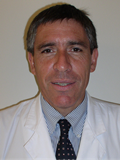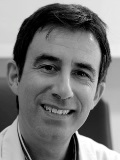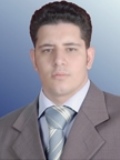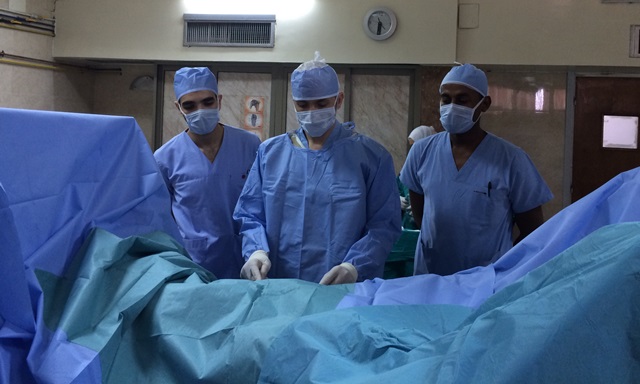How to be a Good Observer
Clinical visits have become increasingly significant as part of the learning process in our specialty, where medical surgeons choose to visit a more specialised centre or a doctor with experience in a certain surgical technique. Visits are mainly from young doctors who have completed their specialty training, but sometimes they are from experienced doctors who want to reinforce some practical concepts and introduce new techniques in their workplace.
Nowadays, clinical visits are becoming easier to organise thanks to globalisation; connections are made effortlessly, even long-distance travel is becoming more readily available, and so on. One restriction set forth recently in many clinics’ bylaws, especially in developed countries, is that visiting doctors who are non-accredited as service staff are forbidden to perform practical activities involving direct contact with patients. It is precisely this practical activity (actively participating in clinical consultations and scrubbing in in surgery) that most doctors look for when choosing their clinical visit.
The aim of this paper is to report the experience of three orthopaedic surgeons from different continents who frequently receive clinical visitors, with clinical suggestions to help make visits as optimal and effective as possible.
1. Establishing initial contact
Initial contact should ideally be direct and personal. It is common practice to contact the medical-professor (hereinafter ‘professor’) during a congress of the specialty. If the visiting doctor (hereinafter ‘visitor’) makes contact with the professor at a congress, the ideal scenario would be to establish a short conversation at the right time, during a break for instance, without being a nuisance to the professor, who might be tired or in a hurry to get somewhere else. This first meeting should be short: potential visitors should briefly introduce themselves, stating their activity as specialist doctors and expressing how important it would be to make a clinical visit to the professor’s facilities. There is no need to exaggerate or overly praise the professor; it is better to create initial rapport with a gentle voice and a positive attitude, while expressing an interest in making a clinical visit. The key to a successful first meeting is to be brief and timely, in order to get a preliminary affirmative response from the professor and his or her email address for further contact.
2. Letter of introduction and request to visit
If the visitor has already made contact with the aforementioned, it would be useful to mention so briefly at the beginning of the letter. If this letter is the first approach to the professor, it should include all the usual formalities: a brief personal presentation, stating the existing motivations for the clinical visit, a description of the visitors’ current activity as an orthopaedic surgeon and the desired visiting dates. There must be NO spelling or formal flaws, which would give the professor a bad impression. It is advisable to send an updated CV as an attachment. It is important to mention a choice of dates well in advance, considering the tight schedule of most professors, which probably will explain the delayed response, if applicable. In many cases, professors do not respond directly but through one of their students or secretary. This is not a problem; it is equally valuable and conveys acceptance. Thus, the visit can be arranged from there. A good tip is to be extremely nice to the secretary, who controls the flow of communication with the professor and will aid in many of your trip arrangements.
3. Preparation and start of the visit
It is highly recommended to prepare the visit in advance in order to obtain as many benefits as possible in this short and intense period. It is recommended to study all the updated literature beforehand, in order to just clarify doubts during the visit instead of learning what is already published. It is also highly advisable to read the journals published by the professor, as visits are a unique opportunity to discuss the details with the author. In addition, information about the clinic’s details, facilities, and so on, may be gathered by accessing its website. This way, not everything will be a surprise upon arrival. It is ideal to arrive there at least the day before and get to know the hospital area, finding out about travel times so as to ensure maximum timeliness on the next day’s visit, which is usually very early. The personal introduction of the visitor at the beginning could determine the outcome of the following days. Punctuality is also key, as well as wearing a formal suit and empathising with the professor and his or her team. Again, it is important to show interest in all team activities, and to respect and appreciate each one of them. A present from your local culture may also go down well with the surgeon and his secretary.
4. Behaviour in the operating room
This will be the most important activity during the clinical visit. Visitors should comply with the institutional visitation rules, meaning, in many cases, that ‘scrubbing in’ to participate more closely in the surgery will no longer be allowed. This must be understood as an established rule that often goes beyond the professor’s will. So, the visitor needs to find a vantage point to have the best possible view of the surgery. This is not a big issue in arthroscopic surgery, due to the availability of different screens. In open surgery, it is harder to see and the visitor should be somewhere that does not interfere with ward activity or the supporting staff. Again, it is important to be really empathic with all staff so as to inspire a helpful attitude and not opposition to the visitor’s viewing activity.
Questions to the professor should be asked at the most relaxed moment of surgery, ideally requesting permission to ask first (at least at the beginning of the visit). The visitor should avoid being a constant ‘inquisitor’; only asking precise questions about the surgery being performed, caring to not take advantage of the professor’s general knowledge. Other topics can be discussed outside the ward or reviewed in journals. If the professor takes time to explain something during surgery, interest and appreciation must always be shown. It will be important for the professor to know that he or she is teaching something that could be useful to the visitor. Trying to prove knowledge of the issue being explained, by saying things like “yes, yes, I already know” should be avoided, as well as trying to get ahead of the professor’s words. The visitor should always show interest in the surgery taking place and not be distracted with other things. It is not positive for the clinical visitors to be chatting or looking at their phone while the professor is attempting to explain surgical details. Visitors must wait until the end of surgery for this. Permission must be requested for taking photos inside the ward.
After the surgery, the professor may be asked questions in a more relaxed and detailed manner, even by raising a scientific discussion and respectfully making some observations of surgical differences. The professor and his or her team must always be thanked at the end for the opportunity given, and goodbyes should be said to all the team and ward staff.
5. Clinical and social activities
It is important for the clinical visitor to complement what was seen in the ward with other outpatient or inpatient clinical activities. The professor must be respectfully asked to accompany the visitor in these activities, which often means that he or she will have to invest more time. Going to a meeting or another social activity with the professor or part of the team would be an ideal but rare occurrence nowadays, given their busy schedules. If it happens, it is often a great honour to spend some time with the professor in a relaxed atmosphere to discuss topics other than medicine (visitors should not only speak of medicine at these social events!) and develop a friendship with the professor.
6. After the visit
It is advisable to personally say goodbye to the professor and the team when possible, thanking each member for their important help and the time and effort spent on the visit. Aside from this personal farewell, it is advisable to write a letter of appreciation after having returned to work. It is a good opportunity to express how useful the visit was and to formally convey gratitude, in order to conclude the ‘clinical visit’.





















